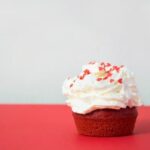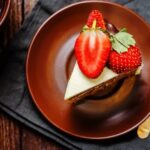Which cream is used for cake decoration plays a crucial role in the overall aesthetic and taste of a cake. The type of cream chosen for decorating can elevate the appearance, texture, and flavor of the dessert. In this article, we will explore the different types of cream used for cake decoration, factors to consider when selecting the right cream, and provide tips for using each type effectively.
When it comes to cake decoration, the choice of cream is a fundamental aspect that can make or break the final outcome. Whether it’s buttercream, whipped cream, fondant, or royal icing, each type offers unique qualities that contribute to the overall presentation and taste of the cake.
In this comprehensive guide, we will delve into the intricacies of each type of cream and provide valuable insights on how to choose the right one based on taste preference, texture requirements, and stability. Additionally, we will delve into step-by-step guides for making buttercream and tips for using whipped cream effectively in decorating cakes. Stay tuned as we uncover the secrets to enhancing your baking skills and creativity with the right choice of cream for cake decoration.
Types of Cream Used for Cake Decoration
When it comes to cake decoration, the type of cream used plays a crucial role in achieving the desired look and taste. There are several options for cream to choose from, each with its own unique characteristics and uses. The most commonly used creams for cake decoration include buttercream, whipped cream, fondant, and royal icing.
Buttercream
Buttercream is a popular choice for cake decoration due to its creamy texture and versatility. It is made by mixing butter or shortening with powdered sugar, flavorings, and sometimes a liquid such as milk or cream. Buttercream can be easily colored and flavored, making it ideal for creating intricate designs and piping details on cakes.
Whipped Cream
Whipped cream is another common option for cake decoration, known for its light and fluffy texture. Made from heavy cream that has been whipped until stiff peaks form, whipped cream adds a delicate sweetness to cakes. It is important to stabilize whipped cream with gelatin or powdered sugar to prevent it from deflating or becoming runny when used as a decorative element on cakes.
Fondant
Fondant is a smooth paste made from sugar, water, and gelatin that can be rolled out into thin sheets and draped over cakes for a flawless finish. Fondant allows for intricate detailing and can be shaped into 3D decorations. While some may find fondant too sweet or chewy when eaten along with the cake, it provides an elegant and polished look to any dessert.
Royal Icing
Royal icing is made from powdered sugar and egg whites or meringue powder, creating a hard yet smooth texture when dry. It is often used for creating fine details like lacework, flowers, and other intricate designs on cakes. Royal icing dries quickly, allowing decorators to build up layers of detail on their cakes.
Understanding the characteristics of each type of cream will help bakers choose the right one for their specific cake decorating needs.
Factors to Consider When Choosing the Right Cream for Cake Decoration
When it comes to choosing the right cream for cake decoration, there are several factors to consider that can greatly impact the final result of your baked creation. One of the most important considerations is taste.
The cream used for decorating a cake should complement the flavor of the cake itself, enhancing its overall appeal. For example, a rich buttercream may be best suited for a chocolate cake, while a lighter whipped cream could pair perfectly with a delicate vanilla or fruit-flavored cake.
Texture is another crucial factor to keep in mind when selecting a cream for cake decoration. The texture of the cream should be smooth and easily spreadable, allowing for seamless application onto the surface of the cake. Additionally, stability is key in ensuring that your decorative elements hold their shape and do not melt or collapse during the decorating process and while on display. Choosing a stable cream will ensure that your intricate designs and decorative details remain intact.
It is also important to consider any dietary restrictions or preferences of those who will be enjoying the cake. For example, if you are decorating a cake for individuals who are lactose intolerant or have dairy allergies, you may opt for non-dairy alternatives such as coconut whipped cream or fondant.
Overall, carefully considering taste, texture, and stability will help you choose the right cream for your cake decoration needs, ensuring both visual appeal and delicious flavor for all who indulge in your creation.
How to Make Buttercream
Making buttercream is an essential skill for any baker looking to create beautifully decorated cakes. Buttercream is a versatile and delicious frosting that can be used for piping intricate designs, creating smooth finishes, and adding flavor to cakes. In this step-by-step guide, we will walk you through the process of making classic buttercream.
To make buttercream, you will need unsalted butter, confectioners’ sugar (also known as powdered sugar), vanilla extract, and heavy cream. Start by beating the softened butter in a mixing bowl until it becomes light and fluffy. Gradually add the confectioners’ sugar to the butter, mixing well after each addition. This will create a smooth and creamy base for your buttercream.
Once all of the confectioners’ sugar has been incorporated, add vanilla extract to taste. For a richer flavor, you can also add other flavorings such as cocoa powder or espresso powder. If the buttercream is too thick, you can slowly add heavy cream or milk until it reaches your desired consistency.
From simple swirls to intricate flowers and designs, buttercream offers endless possibilities for cake decoration. By mastering the art of making buttercream, you can elevate your baking skills and unleash your creativity in decorating beautiful cakes for any occasion.
| Ingredients | Measurements |
|---|---|
| Unsalted Butter | 1 cup (2 sticks) |
| Confectioners’ Sugar | 4 cups |
| Vanilla Extract | 1 teaspoon |
| Heavy Cream | 2-4 tablespoons |
Tips for Using Whipped Cream for Cake Decoration
Whipped cream is a light and fluffy topping that can add a delicious flavor and airy texture to cakes and desserts. When using whipped cream for cake decoration, it’s important to consider its stability and piping techniques to ensure that the final product looks and tastes amazing. Here are some tips for using whipped cream for cake decoration:
- Stabilizing whipped cream: One of the challenges of using whipped cream for cake decoration is maintaining its shape and texture, especially in warm or humid conditions. To stabilize whipped cream, you can add a stabilizing agent such as gelatin, cornstarch, or powdered sugar to help it hold its shape. Another method is to use a higher fat content whipping cream, which will result in a more stable whipped cream.
- Piping techniques: Whipped cream can be piped onto cakes using various piping tips to create different decorative designs. It’s essential to use chilled equipment and work quickly when piping whipped cream onto cakes to prevent it from melting or losing its shape. You can also practice different piping techniques such as rosettes, swirls, or borders using whipped cream for cake decoration.
- Flavor variations: Whipped cream can be flavored with vanilla extract, cocoa powder, fruit puree, or other flavorings to enhance the taste of the cake. It’s important to balance the sweetness and flavor of the whipped cream with the overall flavor profile of the cake to achieve a harmonious combination.
By following these tips for using whipped cream for cake decoration, you can achieve beautiful and delicious results that will impress your friends and family at any celebration or event.
Mastering Fondant
Preparing the Cake and Fondant
Before you start working with fondant, it’s essential to prepare your cake properly. Make sure your cake is level and has a smooth surface before applying the fondant. You can use a layer of buttercream or ganache to create a smooth base for the fondant to stick to. Once your cake is ready, dust your work surface with powdered sugar to prevent the fondant from sticking.
Rolling Out and Applying the Fondant
Start by kneading the fondant until it becomes soft and pliable. Use a rolling pin to roll out the fondant into a circle that is slightly larger than the size of your cake. Carefully drape the fondant over the cake, smoothing it down gently with your hands. Work from the top of the cake downwards, using a smoother tool to remove any air bubbles or wrinkles as you go.
Adding Decorative Details
Fondant offers endless opportunities for creativity when it comes to decorating cakes. You can use different colored fondants, cutters, molds, and edible paints to create intricate designs, textures, and decorations for your cakes. From delicate flowers and intricate lace patterns to 3D figures and edible decorations, mastering fondant opens up a world of creative possibilities for your cake decorating projects.
By mastering these techniques and being mindful of factors such as taste, texture, stability when choosing cream for cake decoration, you can enhance your baking skills and let your creativity shine through in all of your delicious creations.
Royal Icing
When it comes to cake decoration, royal icing is a popular choice for creating intricate designs and delicate sugar flowers. This type of icing is known for its versatility and ability to hold its shape, making it ideal for decorating wedding cakes, special occasion cakes, and cookies.
Here are some key points to consider when using royal icing for cake decoration:
- Versatility: Royal icing can be used to create intricate lace designs, delicate piping details, and elegant monograms on cakes. It can also be used to create beautiful sugar flowers and other edible decorations.
- Stability: One of the main advantages of royal icing is its ability to harden once dried, which makes it perfect for creating standalone decorations that can be placed on top of cakes or cupcakes without losing their shape.
- Piping Techniques: When working with royal icing, piping techniques are essential for creating intricate designs. With the right consistency and piping tips, you can achieve fine lines, delicate lace patterns, and 3D decorative elements.
Best Practices for Choosing and Using Cream for Cake Decoration
Cream is an essential element in cake decoration, as it not only adds flavor but also contributes to the overall aesthetic of the cake. There are several types of cream that can be used for cake decoration, each with its own unique characteristics and uses. When choosing the right cream for your cake, it is important to consider factors such as taste, texture, and stability.
Buttercream is one of the most popular choices for cake decoration due to its creamy texture and ability to hold its shape when piped. It is made by creaming together butter and powdered sugar, with additional flavorings such as vanilla or cocoa powder.
Whipped cream, on the other hand, is light and airy, making it a great option for those who prefer a less sweet frosting. Fondant and royal icing are also commonly used for more intricate designs and decorative details on cakes.
When choosing a cream for cake decoration, it’s important to consider the overall taste and texture you want to achieve. Buttercream provides a rich and creamy flavor, while whipped cream offers a lighter taste. Fondant can be flavored with extracts or oils, while royal icing has a sweet, hard finish once dried. Stability is also crucial when using cream for cake decoration, especially if you plan to pipe intricate designs or elaborate decorations.
In addition to choosing the right type of cream for your cake decoration needs, it’s essential to consider how to properly use and store the cream to ensure best results. Proper techniques for stabilizing whipped cream and piping buttercream can make a significant difference in achieving professional-looking results. It’s also important to store any leftover cream properly to maintain its freshness and prevent spoilage.
| Type of Cream | Characteristics |
|---|---|
| Buttercream | Creamy texture; ability to hold shape when piped |
| Whipped Cream | Light and airy; less sweet frosting option |
| Fondant | Can be flavored; great for intricate designs and decorative details |
Conclusion
In conclusion, the type of cream used for cake decoration can greatly impact the overall look and taste of your baked creation. Whether it’s buttercream, whipped cream, fondant, or royal icing, each has its own unique characteristics that can elevate your cake decorating skills to the next level. By considering factors such as taste, texture, and stability when choosing the right cream for your cake decoration, you can ensure a successful and visually stunning end result.
Learning how to make buttercream from scratch with a step-by-step guide can give you the confidence to create various textures and designs on your cakes. Additionally, mastering whipped cream techniques including stabilizing and piping will open up new possibilities for light and airy decorations. Fondant provides a smooth finish and detailed decorative elements while royal icing allows for intricate designs and sugar flowers.
By understanding the differences between these types of cream and best practices for choosing and using them effectively, you can enhance your baking skills and creative capabilities. Experimenting with different creams will not only add variety to your cakes but also challenge you to improve your techniques in cake decoration. So go ahead and explore the endless possibilities of which cream is used for cake decoration to take your baking skills to new heights.
Frequently Asked Questions
What Cream to Decorate Cake?
When it comes to decorating a cake, there are various options for creams. Many bakers and pastry chefs use buttercream, which is made by creaming together butter and powdered sugar. This cream is versatile, holds its shape well, and can be flavored or colored as desired.
Which Cream Is Best for Cake Topping?
The best cream for cake topping depends on personal preference and the type of cake being decorated. Some popular options include whipped cream, cream cheese frosting, and ganache. Whipped cream is light and airy, while cream cheese frosting offers a tangy flavor. Ganache provides a rich, chocolatey topping that hardens when cooled.
Which Whipping Cream Is Best for Cake Decoration?
For cake decoration, many bakers prefer using heavy whipping cream because it has a higher fat content than regular whipping cream. This allows it to hold its shape better when piped and provides a richer texture. Heavy whipping cream is also more stable and less likely to deflate when whipped compared to other types of creams.

Welcome to my blog about home and family. This blog is a place where I will share my thoughts, ideas, and experiences related to these important topics. I am a stay-at-home mom with two young children. I hope you enjoy reading it! and may find some helpful tips and ideas that will make your home and family life even better!





